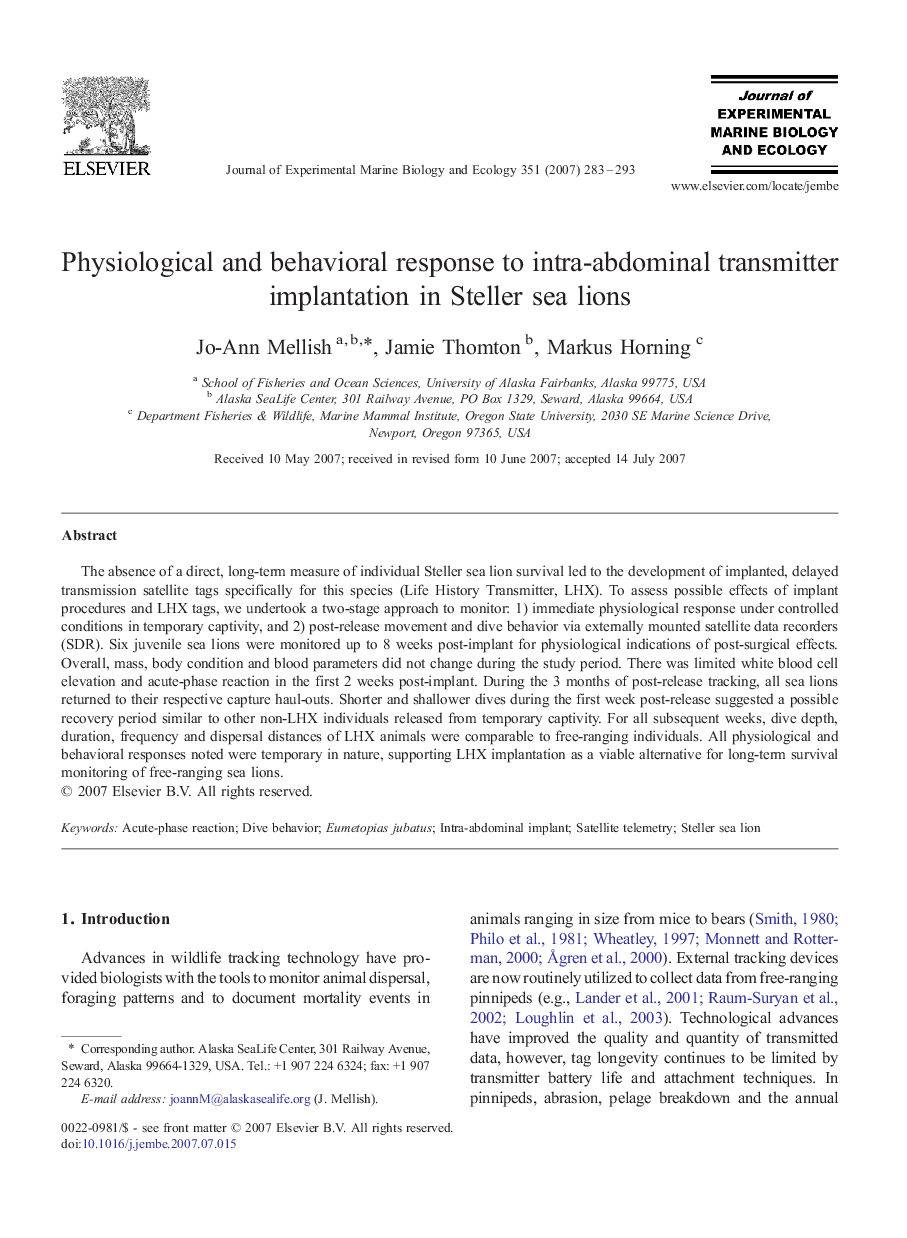| Article ID | Journal | Published Year | Pages | File Type |
|---|---|---|---|---|
| 4397558 | Journal of Experimental Marine Biology and Ecology | 2007 | 11 Pages |
The absence of a direct, long-term measure of individual Steller sea lion survival led to the development of implanted, delayed transmission satellite tags specifically for this species (Life History Transmitter, LHX). To assess possible effects of implant procedures and LHX tags, we undertook a two-stage approach to monitor: 1) immediate physiological response under controlled conditions in temporary captivity, and 2) post-release movement and dive behavior via externally mounted satellite data recorders (SDR). Six juvenile sea lions were monitored up to 8 weeks post-implant for physiological indications of post-surgical effects. Overall, mass, body condition and blood parameters did not change during the study period. There was limited white blood cell elevation and acute-phase reaction in the first 2 weeks post-implant. During the 3 months of post-release tracking, all sea lions returned to their respective capture haul-outs. Shorter and shallower dives during the first week post-release suggested a possible recovery period similar to other non-LHX individuals released from temporary captivity. For all subsequent weeks, dive depth, duration, frequency and dispersal distances of LHX animals were comparable to free-ranging individuals. All physiological and behavioral responses noted were temporary in nature, supporting LHX implantation as a viable alternative for long-term survival monitoring of free-ranging sea lions.
